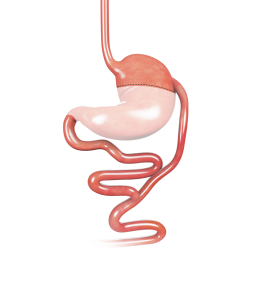Biliopancreatic Diversion
What is Biliopancreatic Diversion (BPD)?
Biliopancreatic Diversion (BPD) is bariatric surgery for the treatment of obesity. It involves removal of part of the stomach to restrict how much food the stomach can hold, along with diverting the GI tract beyond some of the small intestines so fewer calories are absorbed.
It is referred to as a malabsorptive procedure because the digested food from the stomach bypasses the first two segments of the small intestine, the duodenum, and the jejunum, significantly decreasing absorption of nutrients, which helps with weight loss.
Obesity
Obesity is a chronic condition in which there is an excessive accumulation of fat in the body.
Obesity is defined as a Body Mass Index (BMI) of 30 to 34.9 and extreme or morbid obesity is defined by a BMI of 40 or more. When a person’s BMI is 50 or higher, it is referred to as super obesity.
Obesity is a global problem affecting people of almost all age groups and is associated with a greatly increased risk of cardiac problems, diabetes, high blood pressure, breathing difficulties, and diseases such as cancer.
Indications for BPD
Due to the associated risks, Biliopancreatic Diversion surgery is usually only indicated for people who are super obese with a BMI of 50 or more that have not been able to lose weight with diet, exercise or medications and are experiencing serious health problems.
Surgery
BPD surgery can be performed by open or laparoscopic techniques. In the open method, a large incision is made in your abdomen. The laparoscopic method is performed through 4 to 5 small incisions. A laparoscope, a thin fibre-optic tube with a light and camera attached to its end, is inserted through one incision to view the internal organs. The camera allows your surgeon to clearly view the operating site on a monitor. Surgical instruments are inserted through the other tiny incisions to perform the surgery.
In BPD surgery, the lower portion of the stomach is removed. The remaining part of the stomach is then attached to the ileum, the final segment of the small intestine, bypassing the first two portions of the small intestine. The incisions are closed upon completion.

Post-operative care
Your doctor will prescribe pain-relieving medications to keep you comfortable. You will be given instructions to follow regarding wound care, diet, and activity such as:
- Keep the incision area clean and dry.
- Avoid strenuous exercises and lifting heavy weights.
- For the first month after the procedure, eat only small amounts of soft foods.
- Sip water throughout the day to prevent dehydration.
- Follow the diet regimen given to you by the dietician.
- You will require daily vitamin and mineral supplementation for life.
Risks and Complications
As with any surgery, there are potential risks and complications involved. The risks associated with BPD surgery include:
- Problems associated with anaesthesia
- Blood loss
- Infection
- Anaemia
- Deep vein thrombosis(blood clot in the leg)
- Gallstones and osteoporosis
A major complication of BPD surgery is dumping syndrome, a condition in which nausea and diarrhoea can occur after ingestion of highly refined and high-calorie foods.
